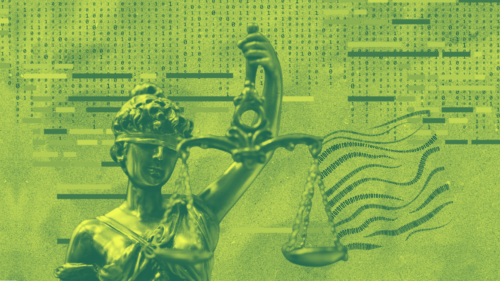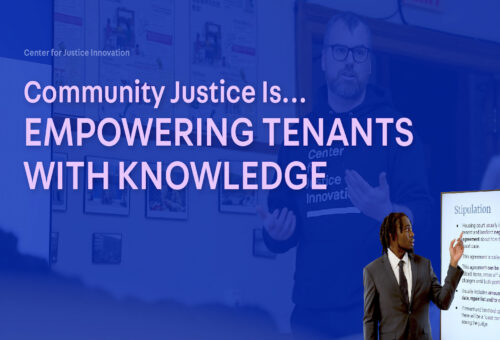Tom Tyler, a professor at Yale University and leading advocate of procedural justice, talks about recent research on the topic, as well as the challenges and opportunities for procedural justice practices to be institutionalized system-wide. For more, watch a video of his presentation “Why Procedural Justice Matters” at Community Justice 2012.
Can you give a quick overview of how you became interested in the topic of procedural justice?
I have a background in conflict management and mediation, so when I started exploring group dynamics and authority, I realized the importance of increasing justice system legitimacy in order to change litigant behavior. I’ve never believed in the paradigm that the typical offender has a “criminal mind” that is so different than the average person’s or that they will be unresponsive to authority. Rather, I think the fact that many litigants have had so few positive experiences with authority makes them even more likely to respond favorably when they do receive fair and respectful treatment.
In what contexts has this idea been tested?
There’s a growing body of research that lauds the work of problem-solving courts—drug courts, mental health courts, etc.—that have been able to achieve significant reductions in recidivism as well as increases in trust and confidence in the justice system. When we look at what they have in common, it’s not necessarily the program model or the target population; it’s the fact that authority figures in these settings act in a procedurally just way. For example, a recent evaluation of drug courts across the country showed that drug courts are more likely to be effective (e.g. decreased drug usage, decreased criminal behavior) when defendants experience the elements of procedural justice: feelings of respectful and neutral treatment, understanding of the process, and an ability to have their voice heard. Another example is restorative justice. While not a problem-solving approach, per se, the effectiveness of restorative justice approaches, too, has been linked to participants’ perceptions that the process was fair.
So is the take-away that procedural justice principles are best paired with non-traditional responses, like alternative sanctions in community courts or restorative justice programs?
No. In fact, there’s research showing that a small investment in procedural justice—as a mere add-on to existing practices—can have an impact. Tracy Meares recently conducted a study that analyzes a parole program in which certain parolees participated in a one to two hour meeting with relevant authority figures. In the meeting, these authority figures expressed their concern about the parolee’s welfare and their interest in his or her success. They explained the rules of parole and invited the parolee to access additional opportunities for support. The parolees who participated in the meeting re-offended 40 percent less than parolees who received the status quo. So even when used as part of standard procedures, procedural justice can have a sizeable impact.
What’s the argument to busy practitioners that they should take time to incorporate these practices into their daily routines?
It’s true: practitioners feel beleaguered by what’s already on their plate, but the argument for procedural justice is that if you spend a little more time up front, you save time and resources down the road. When compliance improves, you won’t have as many defendants to track down for jumping bail or failing to complete community service, and the reduction in recidivism means a significant cost-savings system-wide.
What role does the judge play?
While a range of criminal justice staff can make a difference by employing procedural justice practices, I see the judge as the leader in the procedural justice movement. A study in Hennepin County (MN), for example, showed that judges who spent an extra 5 to 10 minutes with each litigant to express concern for their cases and explain the basis of their decisions were able to trigger a significant increase in compliance. Even when the outcome of the case was unfavorable, the litigants in the experimental group were more likely to follow judicial orders, pay their fines, etc. This impact was achieved by changing judicial behavior alone.
Are there examples where this approach has been applied system-side?
In California, the court system is attempting to implement these principles system-wide. From the moment a litigant or witness walks through the courthouse door until he or she gets to the courtroom, the state is attempting to infuse court practices with procedural justice, such as enhancing the quality of help desks and supplementing information available to the public before they come to court. One noteworthy element of their approach is the use of easily accessible web-based resources. Online resources are relatively easy to create and widely available.
Do you see procedural justice gaining traction in other domains of the criminal justice system?
There’s been a huge shift throughout the system in the past five years. This year’s COPS Office conference, for example, featured the topic of procedural justice in the keynote speech. I think various criminal justice agencies are finding it to be an attractive solution to budget crises that have forced a closer look at what actually works. And because the underlying philosophy of procedural justice is consistent with the reason many criminal justice professionals went into that line of work in the first place—to help people—it’s an easy sell.
What are the challenges to implementing procedural justice practices in the justice system?
I think the biggest challenge is the legal context itself. The stakes are high in the criminal justice system—particularly at the end stages of the process in criminal courts—so it’s difficult to convince system players to experiment. There’s also the challenge of attracting interest and funding to something that isn’t a new specialty project like a drug court or mental health court. Procedural justice can be an overlay to the status quo of the existing system—which makes it cheaper and perhaps easier to implement—but it lacks the excitement that a newer, shinier project might generate.
Beyond the criminal justice system, are there other fields that implement procedural fairness practices particularly well?
The management field is light years ahead on this topic. Unlike in the criminal justice system, where we assume that everyone’s entitled to the same procedure, management consultants understand that procedures should be shaped to the situation within a particular company. Unfortunately, there’s not much research sharing between industries so these lessons haven’t really permeated the criminal justice system or other contexts.
What additional research or practitioner tools do you think are missing from this area of study?
I think what is still needed is an off-the-shelf curriculum for practitioners about how you actually implement procedural justice principles. When I talk about this topic and the research supporting it, practitioners want to know how they can translate it into practice on the ground. At the moment, I don’t have anything concrete to give them. Fortunately, there are curricula currently under development—by the COPS Office for police departments and by the Center for Court Innovation for criminal courts.
As for additional research on the topic, I’d like to explore the internal dynamics within criminal justice agencies to examine how procedural justice practices by agency leaders can change institutional culture and teach these principles by example. Many courts and police departments are currently structured internally in ways that do not reflect procedural justice, so it’s hard to tell employees to treat the public with fairness when those employees themselves do not experience fairness in their daily work life. I think that’s how you institutionalize procedural justice—by example.

